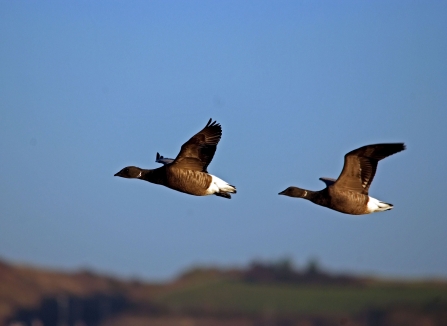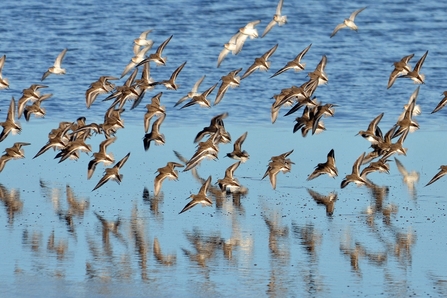The fading of summer need not be a melancholic time of year, in fact we’re now starting to welcome lots of visitors that will add a splash of brightness to our shores. This season is the last phase of a migration journey that sees thousands of ducks, geese, and wading birds travel to the Solent. Many of these birds will have travelled from lands as distant as Iceland and even Siberia.
We often think of migratory flocks as intimate gatherings, and this is sometimes the case – geese and cranes, for example, fly in family groups. But these flocks can just as easily form because individual birds happen to be travelling in the same direction. Strangers set off, instinctively following the same route, and then converge with others following that path. A flock of ducks might simply have formed a random gathering for a few hours.
Whether strangers or acquaintances, all birds stand to benefit from the advantages of flocking. Keeping together means more eyes to spot approaching shelter, land, or predators – even birds without an immediate need for the first two will flock together in the name of safety. To maintain the cohesion of their group, however temporary it may be, members of the flock call out to each other as they fly.



